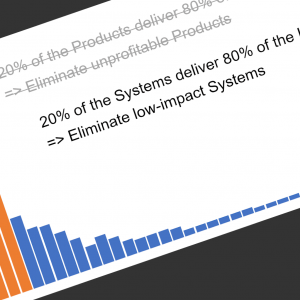
You are only as good as what you know, and half of what you know comes from books
Truth be told, it’s not an original thought – I heard it many years ago, but it rang true for me personally. I still have many of my old college textbooks – engineering volumes bound in impressive faux leather, including a massive, near-mint copy of the CRC Handbook of Chemistry and Physics – 60th edition (note: collectors, make me an offer!). Over the years, I’ve amassed a reasonably large collection of bound print; the obvious computer tech stuff, and some history for reading fun – plus a diverse selection from other functional disciplines. This does not reflect a lack of personal focus – many of the titles on my shelf were selected by peers, mentors, and supervisors over the years, as I got exposure to and sought to understand different functional areas of the business.
This is a pretty important point – you really can’t pick it all up by osmosis, you need to invest some time for book learnin’. I’ve found the most valuable aspect of this is the chance to learn about different areas of the business from a practitioner’s viewpoint. Have your ever read something focused on your preferred field (tech, hobby, etc.), written by a fellow enthusiast, that really nails it (… that’s exactly how I would do it …)? Books, as captured thought, are a terrific way of getting to the facts about a particular field – but they also provide insight. The incredulous may ask why is that idea preferred? And what path could they possibly have taken to get there? If you’ve read their book, you will have a better feel for how they got there – and why it makes sense.
Some examples …
Operations: The complexity of orchestrating a Sales and Operations Planning cycle is something to be appreciated; you must start with an understanding of how Sales, Operations, and Finance all depend on each other. Enterprise Sales and Operations Planning (Palmatier/Crum) use the same storytelling method of The Goal (Goldratt) (another great read, by the way) to lay out the interrelationships – but also give insights into the (sometimes competing) viewpoints of the multiple stakeholders. Are you frustrated trying to pin Operations down? They are working in a tightly integrated “real-world” version of ERP.
Sales: Bullet points are not the sole province of PowerPoint – books like the Little Red Book of Selling (Gitomer) make good use of the technique, while How to be a Fierce Competitor (Fox) uses short stories (a la Dale Carnegie, perhaps?). Does this mean sales reps have short attention spans? No, it probably means they are more focused on specific goals and short-interval steps. Remember, they are right at the top line – the focus of most attention.
Design: At first I was struck by the visual consistency between the Universal Principals of Design (Lidwell, Holden, Butler) and the Gof4 tech classic Design Patterns (Gamma, Helm, Johnson, Vlissides) – but the real fun was diving in to the details. It’s really a reference book, but the sections are denoted by questions like How can I enhance the usability of a design? and How can I influence the way a design is perceived? It’s also not just about the design of “things” – sections on the 80/20 Rule and the Law of Pragnanz are directly applicable to systems and interface design. Still think the creative team is unfocused? Maybe it’s just “creative differences”.
Finance: Different corporate structures have broadly different operational styles. Public companies might focus on dividends and the long term, closely-held companies may seek to minimize taxes, start-ups on basic survival and meteoric growth. When you get into the world of Private Equity, you are exposed to a focus on “sweating the equity” and leverage that is (in a word) intense. But is it inconsistent, short-sighted, wrong? Lessons from Private Equity Any Company Can Use (Gadiesh, MacArthur) is a terrific book for you – it lays out the fundamental thought process of why Private Equity firms do what they do – a laser-like focus on making a company more valuable – and unlocking true potential. Dismayed by aggressive tactics? It’s probably very different than “how things used to be around here” – but it iss spot-on correct based on what the management / ownership team are asked to do.
Next – tech reading recommendations for the non-technical









This Post Has 0 Comments